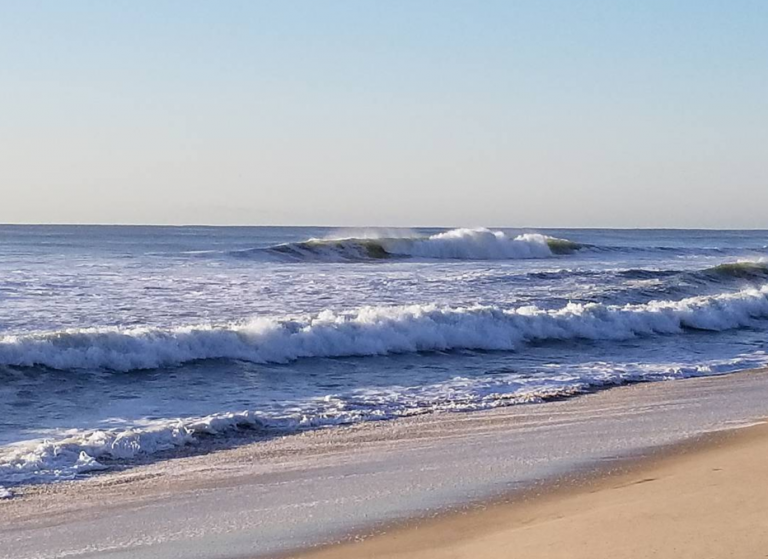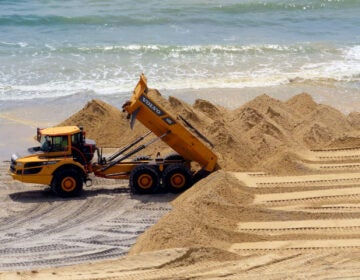Irma swells begin arriving at the Jersey Shore

Waves at the Jersey Shore this morning. (Photo: @barrierislandclassic via Instagram)
Irma continues to track through the Caribbean Friday morning en route to Florida but her swells are already arriving at the Jersey Shore.
Swells are currently running in the four to five foot range, according to NOAA buoy data.
Swells from #Irma have arrived at NJ/DE beaches. Should run in the 4 to 5 foot range today. pic.twitter.com/MNrI0YegFf
— Gary Szatkowski (@GarySzatkowski) September 8, 2017
According to the National Weather Service office in Mount Holly, the swell is from the southeast and long period at 13 seconds, causing dangerous swimming conditions.
Recognizing this threat, the service is advising of a high risk of rip current development Friday, meaning that anyone entering the ocean will be subject to potentially life-threatening conditions.
“Today is a day we must get through without incident. There have been six fatalities known to be directly related to rip currents along our NJ shore this summer, with other fatalities related to high surf and surf zone injury,” the forecasters wrote.
The service says to follow the advice of local beach patrols and officials.
The southeasterly swells are associated with Hurricane Irma and may subside slightly this weekend, according to the service, adding that the risk should be a “solid” moderate on Saturday and a low or moderate risk on Sunday and Monday. By Tuesday, however, the risk might rise back to high due to the combined swells arriving from what remains of the tropical systems Irma and Jose.
The National Weather Service does not forecast any significant impacts from Irma as the remnants arrive in the region on Wednesday, calling for showers and gusts to around 30 miles per hour. No tidal flooding is in the forecast.
Here’s how to identify a rip current:
- A channel of churning, choppy water.
- An area having a notable difference in water color.
- A line of foam, seaweed, or debris moving steadily seaward.
- A break in the incoming wave pattern.
If caught in a rip current, NOAA advises:
- Stay calm.
- Don’t fight the current.
- Escape the current by swimming in a direction following the shoreline. When free of the current, swim at an angle—away from the current—toward shore.
- If you are unable to escape by swimming, float or tread water. When the current weakens, swim at an angle away from the current toward shore.
- If at any time you feel you will be unable to reach shore, draw attention to yourself: face the shore, call or wave for help.
WHYY is your source for fact-based, in-depth journalism and information. As a nonprofit organization, we rely on financial support from readers like you. Please give today.




